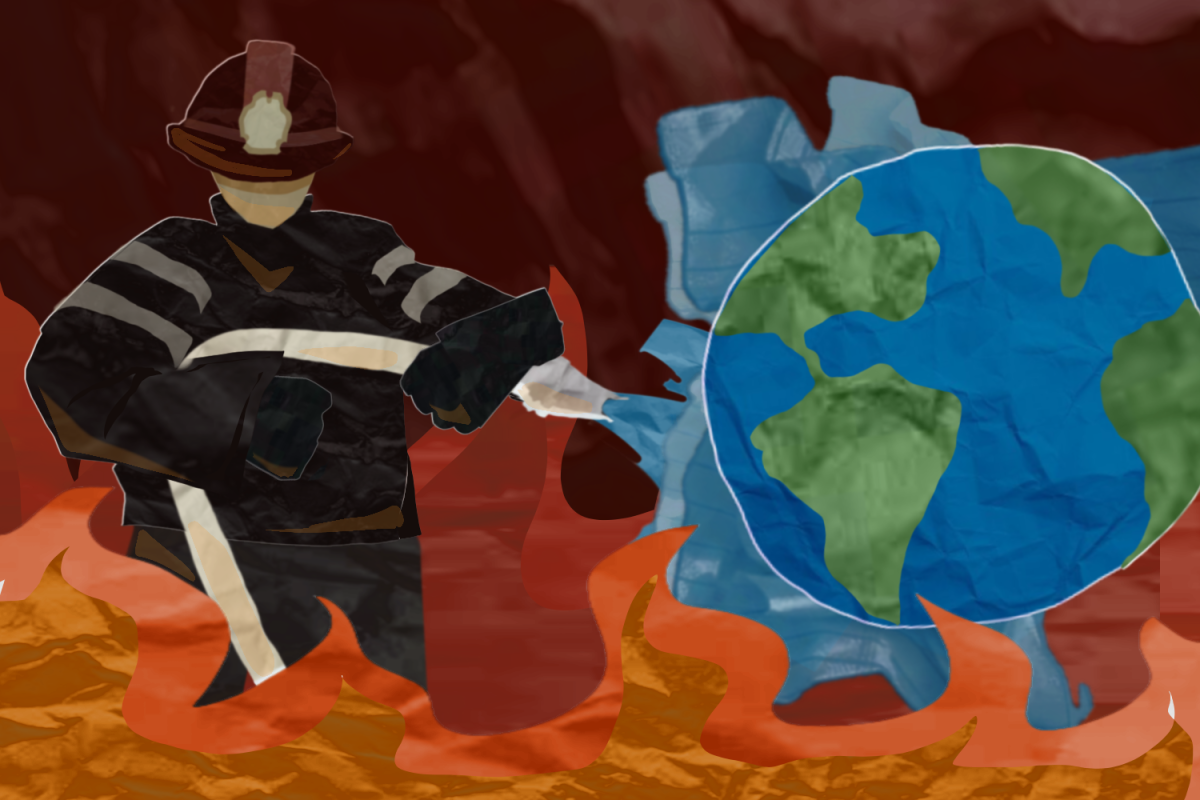Flames from the San Bernardino County Line Fire have erupted across Southern California, swallowing over 38,421 acres of land in just ten days.
Residents in affected areas have been forced to evacuate their homes, bringing their families, pets, and livestock to safety, while over 35,000 structures remain threatened. The blaze, which began over a week ago on Sept. 5 due to arson, is now 36% contained, according to the California Department of Forestry and Fire Protection (Cal Fire).
Over 4000 personnel have been deployed to assist with evacuations and contain the fire, focusing on control lines and hot spots.
While a man from Norco has been arrested on suspicion of starting the fire, it ignited amidst a severe heatwave in Southern California. The Line Fire is one of three major wildfires in the state’s southern region, all exacerbated by triple-digit temperatures and dry conditions. The other two fires — the Bridge Fire and the Airport Fire — have consumed 54,567 acres and 23,519 acres of land, respectively, with the Bridge Fire being the largest ongoing fire in the state, according to Cal Fire.
In addition to the environmental destruction and displacement of residents, other communities in Southern California have also faced secondary impacts. The air quality in cities nearly an hour away from San Bernardino has worsened due to the significant amount of smoke the fire produced.
“There was a warning sent to all residents of worsened air quality. The air smelled slightly of smoke, but not as much as it would have in a region such as Lake Forest. In Lake Forest, air purifiers were placed in the clinics that my mother works at,” said Julia Contreras, a 17-year-old resident in Anaheim.
Although arson rather than natural factors caused the San Bernardino fire, it stresses the growing issue of wildfires in California, which has become increasingly noticeable due to a rise in frequency and severity. In recent years, communities across the state have been devastated by wildfires, such as the brutal Camp Fire in Paradise in 2018, which displaced over 50,000 people, and the August Complex Fire in 2020, the largest wildfire in Californian history, burning over 1 million acres.
Climate change has significantly increased the risk of wildfires. Extreme heat and dry weather, which are intensified by global warming, contribute to the overall rise in wildfire frequency and intensity through elevated temperatures and prolonged droughts.
“This past week, temperatures were incredibly high in Southern California. They were so high that some school districts, such as Los Angeles and Torrance Unified School District, closed or ended classes early. I believe that rising global temperatures influenced this sudden and intense heatwave, which was uncomfortable for everyone, especially those with no access to air conditioning,” Contreras said.
A recent study by Climate Central found that wildfire seasons are lengthening and intensifying, particularly in the West. This trend is driven by a deadly combination of high heat, which is worsening significantly due to climate change, along with low humidity and strong winds — traits characteristic of the region.
“With rising temperatures worldwide, we are experiencing massive heat waves. As these heat waves get more severe every summer, they contribute to the risk of wildfires. Due to California’s dry heat, the lack of rain and ongoing droughts significantly contribute to how climate change is severely impacting our societies,” said Clara Keough, a freshman at the College of Natural Resources at the University of California, Berkeley, studying Society and Environment.
Direct causes of fire often vary, whether due to human actions, lightning strikes, or discarded cigarettes. However, several key factors influence why fires spread so quickly in California and why so many have been occurring lately.
According to Kevin Stanford, a fire safety and prevention specialist in the Bay Area who manages fire lines in the local area, California and the country’s western regions are more prone to wildfires due to their distinct climate.
“We have a lot of very dry air, and when that combines with our wind from the ocean, it can move fires very quickly through a lot of the vegetation. We also have some of the largest sections of forests in the country. Historically, indigenous peoples constantly managed this area with controlled burns, but with the onset of settlers and the displacement of indigenous peoples, a lot of that maintenance has not been done for many, many years,” Stanford said.
Stanford has been volunteering since 1998, establishing a program to address the need for maintaining vegetation in his local neighborhood due to extreme droughts and the problem of cigarette disposal. Since then, he has worked closely with the fire department to ensure clear access to fire hydrants and to especially monitor the growth and health of local plants.
In recent years, Stanford has observed changes in growth patterns, which he attributes to global warming, noting the impact of overgrowth and plant dryness on a wildfire’s capacity to spread and intensify.
“We have huge droughts, and sometimes the weather reverses dramatically. For instance, in the last two to three years, we’ve had a very long winter season, whereas in July, it’s been very cold when we typically expect heat. Although we normally don’t have much rain, this year, we’ve had several months of rain, which triggers the sprouting of much more vegetation in a shorter amount of time,” Stanford said. “If the weather changes super fast, as it does with global warming, the vegetation can dry out quickly, and in some areas, we’ll have four times the normal amount of vegetation.”
Furthermore, with global warming becoming an increasing problem, the disruption of regular ecological cycles also contributes to the severity of wildfires, primarily due to the abundance of vegetation.
“We have a lot of deer and wildlife, but they can’t consume four times as much food in the same amount of time, which would help maintain that normal cycle. Global warming has made many of these cycles abnormal,” Stanford said.
In the face of wildfire threats and climate change, many cities in California are finding ways to protect themselves, their neighbors, and the planet.
Stanford has trained over 25 cadets in neighborhood watch techniques in his local community, focusing on clearing overgrown vegetation from the hillsides where they live. This approach creates defensible spaces that help slow the spread of fires by reducing fuel sources like grass. Additionally, it allows fire departments to respond more effectively in these cleared areas, as it improves visibility and footing, which are crucial given the rocky terrain of the hillsides.
“I’m not one to wait for a huge disaster before taking action. I’ve always considered it important, so I volunteered to do it. I believe there are small things many communities can do, like maintaining their own properties or coming together to help others with maintenance,” Stanford said.
On a broader scale, communities can make an effort to increase their sustainability practices in order to reduce their environmental impact and mitigate global warming.
As a student at Berkeley, Keough has noticed that her school has taken action to increase sustainability efforts as a way of contributing to environmental conservation.
“I’ve definitely noticed that the campus is making an effort to make sure that trash is able to be recycled or put in the compost. There’s never litter or waste that’s actually being thrown out. In California, the efforts that people are making to make our lives more sustainable for the planet are very important. However, I believe that in other states, that is definitely not happening, and they need to start working on their efforts. Hopefully, these happen in the coming years before climate clearly continues to take a toll on humanity,” Keough said.
After reflecting on the impact of the San Bernardino fire on local communities, Contreras emphasized the importance of preparing for wildfires and specific climate challenges that are likely to become more prevalent over time.
“Communities can better prepare and respond to wildfires by increasing the amount of water resources, such as fire hydrants, in different areas. Additionally, more must be done to decrease the effects of climate change, which will be a global effort,” Contreras said.


































